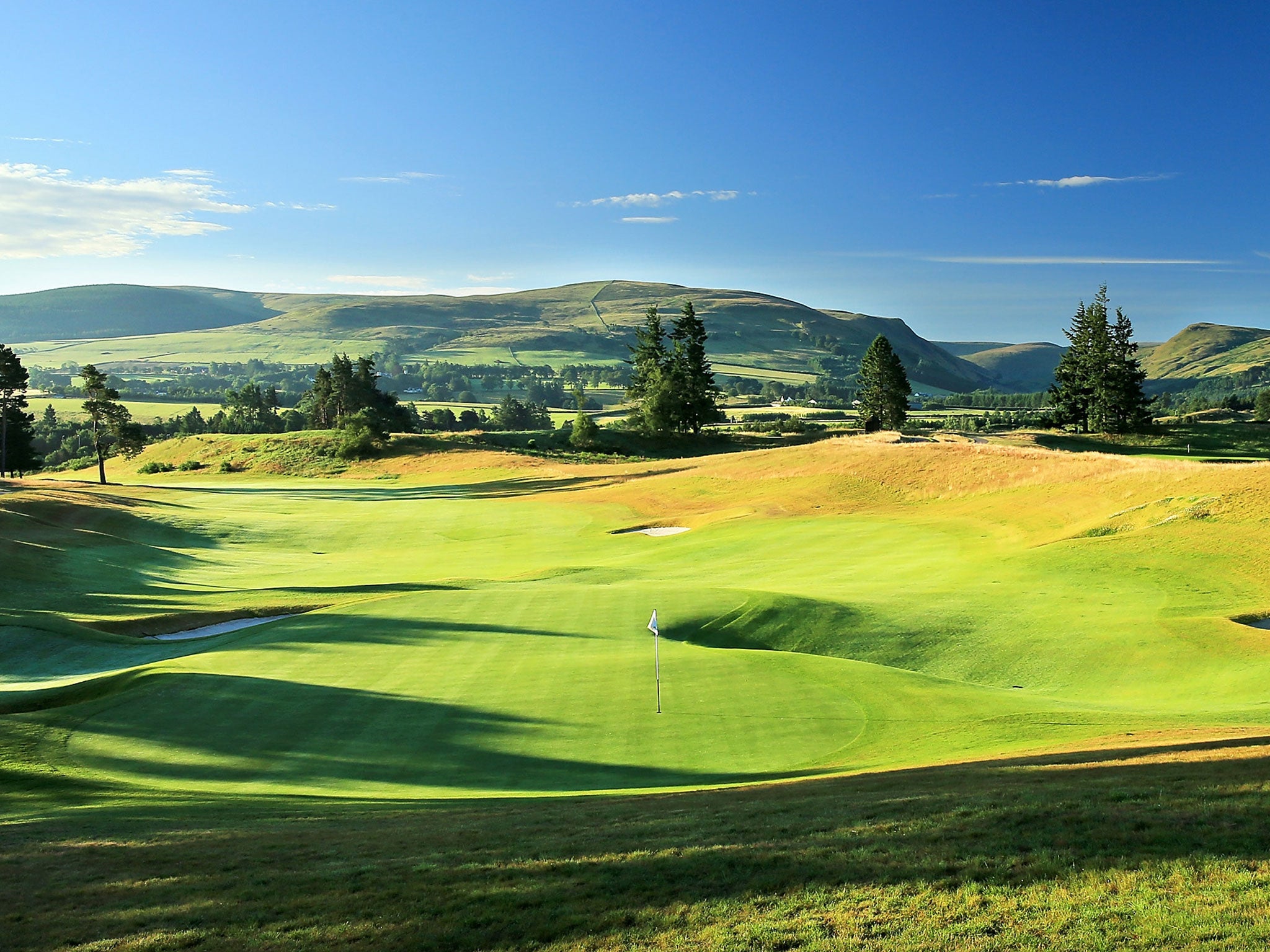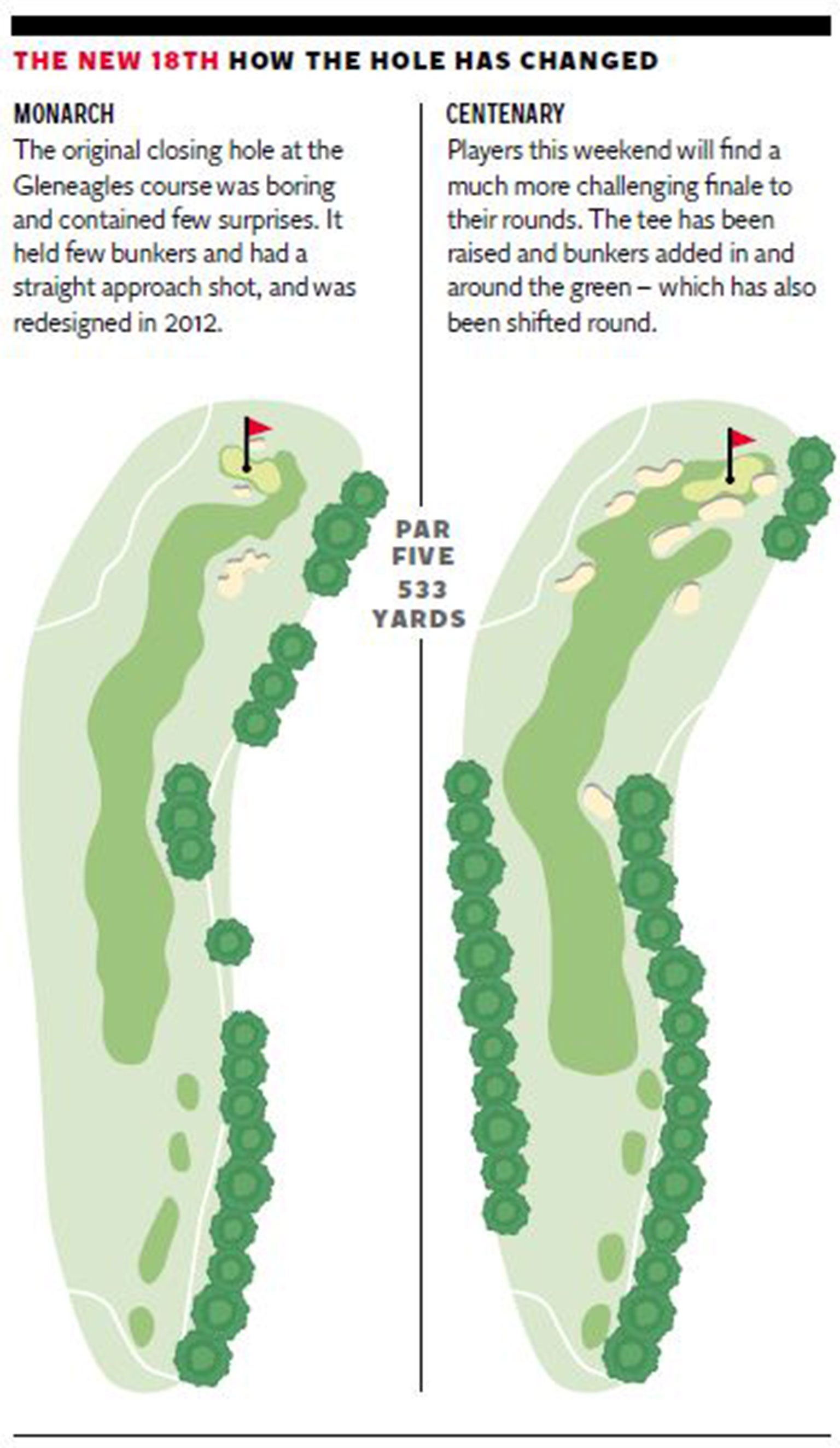Ryder Cup 2014: How a kilt was put on Jack Nicklaus' course
The PGA Century at Gleneagles has received a makeover more in tune with its Scottish setting – and a dramatic 18th hole

If the tradition-loving members at Gleneagles could choose where to play the Ryder Cup it would not be over the course Europe and the United States will tee off from on Friday.
Instead, they would opt for a hybrid course made from their favourite holes on the King’s and Queen’s – the two courses designed by the legendary James Braid, the man chosen by the Caledonian Railway Company in the early 1920s to deliver golfing heaven to the Highlands.
The design of the PGA Centenary course – called the Monarch’s when it opened in the early 1990s – by Jack Nicklaus was initially perceived as almost heretical. Braid’s genius was all about scale, grace and Highland majesty: golf that beautifully carved its way through the Perthshire forests and hills that surround the grand hotel.
The Monarch’s looked like it had been designed in Florida, built there, and dropped from the sky on to selected terrain. It just was not Gleneagles. The antithesis of the King’s and Queen’s, it was all about cart-paths, buggies, and booming drives counting for more than accuracy. There was barely a nod to where it was – in Scotland and, crucially, in Braid’s backyard.

Gleneagles, to its credit, accepted it had perhaps got some of it wrong. David McLay Kidd – a local who had made his mark on world golf architecture with the spectacular Bandon Dunes in Oregon, and gone on to design the Castle Course at St Andrews and the much-praised Machrihanish Dunes – was brought in to do what many members and guests wanted; put a kilt on the Monarch’s.
In the last few years, as the Ryder Cup battle drew nearer, Nicklaus himself has also returned to Perthshire to tweak some of his 1990s design.
More run-off areas were created, room for the traditional Scottish pitch and run. The hidden bunker tucked away at the back of the second green was taken out. The vast wasteland bunker in front of the fourth green was reshaped into a smaller Braid-like trap. A new bunker was put in around the eighth green.
Kidd got rid of the huge flat sandy waste area running along the fairway near the green on the ninth hole. Bunkers of this scale and function are all over the place on Pete Dye’s Kiawah Island in South Carolina. But in the Scottish Highlands? Please.
Kidd expanded the small lake that used to sit alongside the wasteland . The result? Big hitters on both the Europe and US teams, if the weather is good, will relish the prospect of going over the water to steal an eagle on this par five.
On the par-three 10th, a missed iron from 208 yards could still mean redemption from a new run-off area.
The old par -five 12th, which had another huge Matisse-shaped bunker on the Monarch’s, is now a par-four on the Centenary, and far tougher. And the 14th, previously an easy par three, may now become a Ryder Cup classic – at 320 yards within easy reach for the McIlroys and the Bubbas.
Many Ryder Cup matches will end on the par-five 16th. It remains one of the best holes in Nicklaus’s original design – and barely needed any update for the cup warfare.
But if not on 16, and should close matches struggle on to 18, a hole barely recognisable from the 1990s awaits.
Dull, boring and nothing to look forward to – that was the original closing hole of the Monarch’s. Now the best players in the world, who tend to leave the best until last, will test a reworked hole worthy of deciding the Ryder Cup.
Both Kidd and Nicklaus needed to find and deliver drama for the 18th. The tee box was raised and a bunker – that really should not trouble a Ryder Cup competitor – was put in at the corner of the dog-leg.
But where there were previously three non-threatening bunkers near the green, there are now seven, with the old slim green shifted round to attract the two-shot eagle approach.
To the left another run-off area, absent from the first Monarch’s design, means the Ryder Cup could be won by a magical pitch and run. And who plays that shot best? Exactly – not the Americans.
The PGA Centenary may not be liked. It is too American and does not have the charm of Braid’s best but, although it once lacked drama, it does not now.
Join our commenting forum
Join thought-provoking conversations, follow other Independent readers and see their replies
Comments
Bookmark popover
Removed from bookmarks